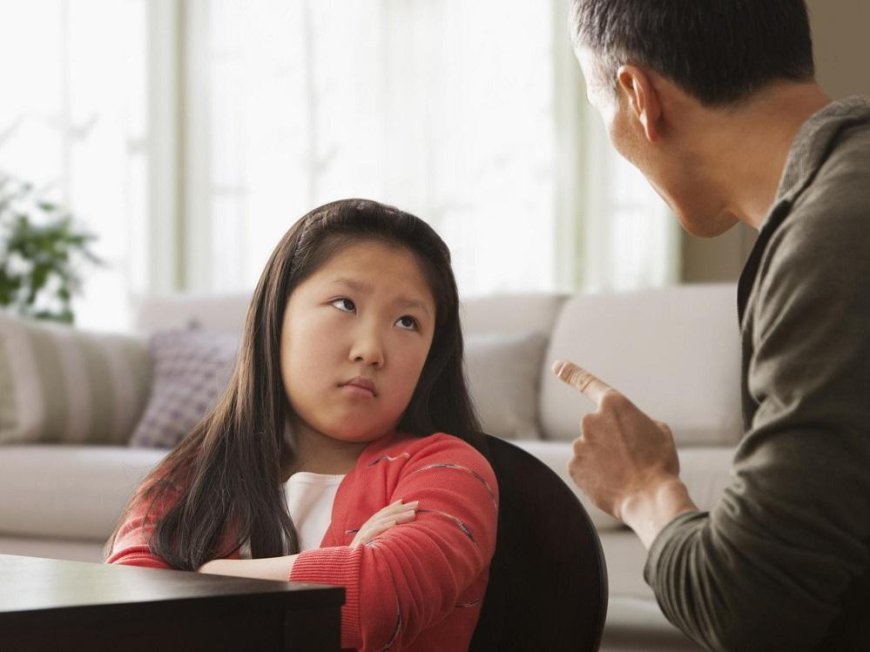Recognizing difficult behaviors in children and adolescents
Difficult behaviors is a very broad concept, which we most often define various types of educational difficulties in working with students.

Difficult behaviors is a very broad concept, which we most often define various types of educational difficulties in working with students. Observation (keeping observation cards) not only allows for an early diagnosis of e.g. behavioral disorders, progressive demoralization or depressive states in children and adolescents, but also provides the foundation for organizing effective support for these students.
Difficult behavior
The most frequently observed difficult behaviors in children and adolescents are: breaking the rules, disregarding the authority of adults, lying, destroying one's own and other people (acts of vandalism), verbal and psychological violence and physical, vulgar vocabulary and behavior, progressive demoralization (neglecting school duties, addictions, truancy, running away from home). The background of these behaviors may vary, but in each case the student needs the support of adult guardians.
When observing any of the above-mentioned behaviors, it is good to keep observation cards of the behavior of a specific student or student. Not only difficult behaviors should be noted, but also the context, because it gives us information about what provokes the student to specific reactions (what happened before the difficult behavior), and allows us to assess the effectiveness of the educational activities undertaken (consolidating the pattern or extinguishing inappropriate behaviors). The constant keeping of cards will also give an answer whether the behavior is incidental or whether we observe an already established pattern of antisocial behavior, which clearly violates the rights of other people. In this case, the student should be diagnosed by specialists in a psychological and pedagogical counseling center in terms of the diagnosis of behavioral disorders.
Support for a student with difficult behaviors
Regardless of the context of the student's antisocial behavior, the decisive factor for effectiveness is the teacher's immediate constant response, a firm message about breaking the established rule and reminding of the agreed consequences: We agreed to speak to each other in a polite tone; we do not accept screams and insults. You know the consequences, so please act on them now. If all learners react similarly, the chaos in understanding the child's norms is reduced. Ideally, parents should also be included in these established rules (although this is not always possible).
Must Read: Relationship based cooperation with the student
Important rules for working with students with difficult behaviors: control your emotions, carefully observe your behavior and listen actively (non-verbal words and messages), focus on strengths (often difficult behaviors are the result of low self-esteem), look for solutions, not blame, make attempts involving the student in behavioral changes (e.g. when he communicates that it is boring and he will not do it, ask how he / she would like to learn it or what technique he / she would like to do it), praise the efforts, even if they do not bring the expected results.
Educational work with a group with difficult students
Working in a group with students with difficult behaviors is always a challenge for the teacher. Above all, it should be well planned. The most important areas of educational work:
- Clearly defined rules of conduct and frequent recall of them. It may be a contract agreed with the group. Better there be wording of what should be done and not what should not be done. (Instead of: We are not allowed to walk around the classroom during the lesson. Better: We work in designated places.) Reminding can be based on a form of reference to records when it comes to different behaviors, e.g. when it is too loud when working on assigned tasks: in bands we talk so that the music can be heard.
- Consistency and consistency in reacting to the behavior of students. It increases the possibility of predictability of events, which affects the feeling of security. Moreover, if someone decides to break the rules, they also choose to take the consequences. This increases the responsibility of young people.
- Assertive communication and good relations with students. Due to the function, the teacher should be a model of behavior. Assertiveness and emotional balance in communicating with students show that you can control your emotions, talk about any topic with respect for the other person. An additional benefit of good relationships will be that it will be easier to find solutions to different student problems. They are more willing to cooperate if they feel that the teacher likes them.
- Focusing on opportunities, not mistakes. This has a significant impact on supporting students' self-esteem. The more they believe they can succeed, the more motivated they will be to make efforts, and this can encourage them to work on changing their strategies of behaviors that are holding them back from achieving success.
To sum up
They are brought up only by those who hope. When analyzing the piling up difficulties in the educational work, it may be that the teacher feels that the problem is beyond him. Maybe then the thought that some of our students have stopped believing that success and happiness in life is for them will be a support, and this view is shared by some of the parents of our pupils. Only we teachers remained. If we lose hope that they can be helped to succeed to the best of their ability, they will be left alone. Change is possible if you want that change. It takes time, especially when it comes to changing an established response strategy. We have an influence on changing the behavior of our students. And it is a source of hope that motivates us to take up new challenges all the time.
